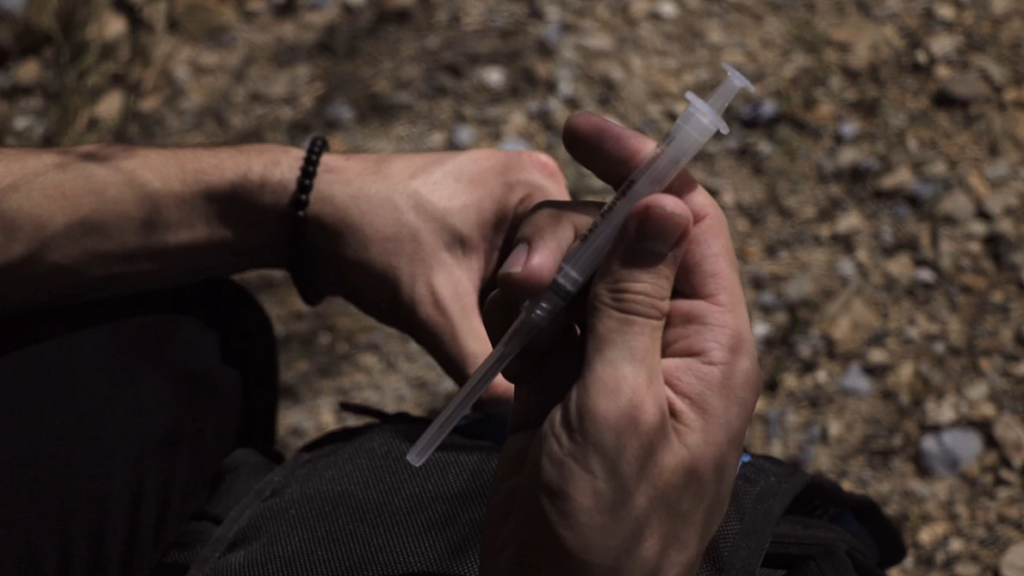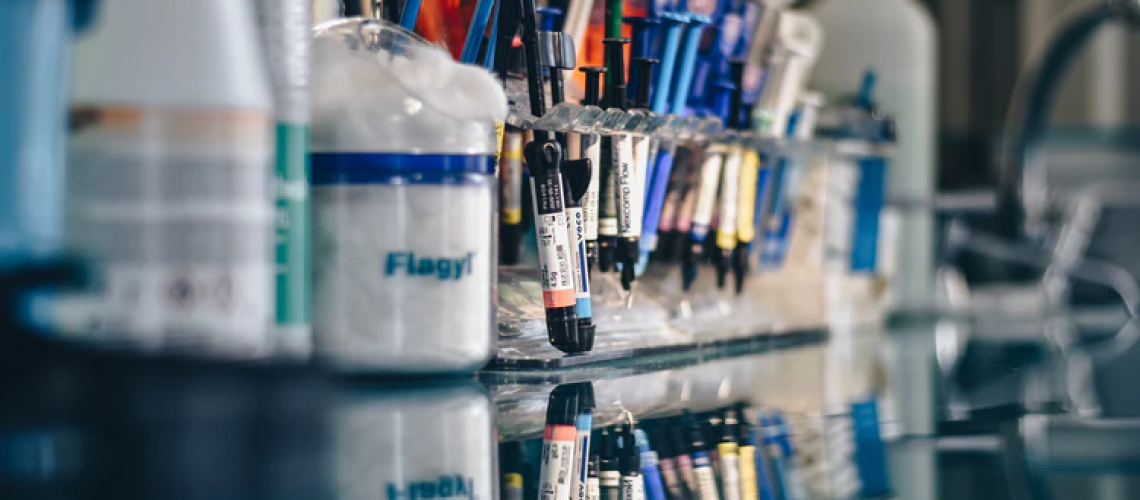The World Health Organization (WHO) site states that injections are one of the most common health care procedures. Over 16 billion injections are provided annually across the globe. These injections take place in surgery centers, dialysis clinics, emergency services, veterinary clinics, and more curative care settings.
Needles are often used to treat:
- Arthritis
- Cancer
- Diabetes
- HIV/AIDS
- Infertility
- Multiple sclerosis
- And other medical conditions.
To prevent the spread of infectious diseases, each injection needs to be administered with a sterile needle. With this process, it’s also essential for healthcare facilities to sterilize needles in bulk to keep patients and employees safe.
Skip to section
Why It Is Important to Use Clean Needles
How to Reduce the Spread of Disease When Administering Injections to Patients
How to Sterilize Needles in Bulk
New Needles
Needle Exchange Programs
Cleaning Injection Equipment
How to Sterilize Needles in Bulk
Why It Is Important to Use Clean Needles
It’s imperative to use clean needles for injected medication because unsterile needles can transfer bacteria and life-threatening diseases like HIV and Hepatitis. And by using new sterile needles or by not sharing needles, people can reduce the spread of these diseases.
HIV
Human Immunodeficiency Virus (HIV) is a deadly virus that attacks white blood cells in a person’s immune system. If left untreated, the immune system becomes weaker, and the HIV infection develops into AIDS. In 2019, AIDS killed 690,000 people worldwide.
HIV is a very contagious virus that can be spread through blood, semen, vaginal and anal fluids, and breastmilk. It is most commonly spread through sex, pregnancy, and sharing needles or syringes. According to the latest data, 1.2 million people in the United States have HIV, and 1 in 7 of those people do not know they are infected.
If a person who has been infected by HIV uses a needle, syringe, cooker, or cotton for IDU, their blood can directly transfer to the next person who uses the needle or syringe. This will infect the new user with HIV.
Hepatitis
Hepatitis B (HBV) and Hepatitis C (HCV) are viruses that attack the liver’s cells and cause cirrhosis, liver failure, or liver cancer. According to Hepb.org, 780,000 people in the world die each year from Hepatitis B. And the WHO found that Hepatitis C infects 67% of injection drug users globally.
Hepatitis viruses spread through blood and bodily fluids. Hepatitis is most commonly spread through blood-to-blood contact, sex, IDU, and pregnancy. It is estimated that 30 million people will become infected with HBV.
To prevent Hepatitis from spreading through IDU, users should always use a new needle or syringe and never share cookers or cotton with other users.
Ebola, Malaria, and Marburg viruses
In developing countries, sanitary needles are not as accessible as they are in first-world countries. Unsafe injection practices such as reusing unsanitized needles can transmit bloodborne illnesses such as Ebola, malaria, and Marburg viruses, which have high death rates and leave long-term damage on those infected.
Related: Common Modes of Transmission of Infectious Diseases

How to Reduce the Spread of Disease When Administering Injections to Patients
To provide the safest care possible to patients when injecting their medication, follow these precautions
- Use new, sterile needles and syringes
- Add the Sterilis Solutions Advantage to your office to turn regulated medical waste into harmless materials that can be thrown out with regular garbage
- Participate in needle exchange programs
New Needles
To treat patients safely, your company needs to use a new, sterile needle or syringe for every injection. By using a new needle every time, you can confidently deliver their medication without the risk of spreading disease.
You should always buy needles and syringes from reliable vendors like pharmacies. There are also non-profit organizations, like the Open Aid Alliance, that help users get free needles and syringes to help stop the spread of diseases. They can help you find reliable, safe vendors for free, new needles and syringes.
Needle Exchange Programs
If your company is under a tight budget or if there isn’t a free needle non-profit organization nearby, your company can join a Needle Exchange Program. These non-profit organizations will exchange your used needle for a new needle or syringe.
While these programs have shown to reduce spreading diseases and haven’t increased drug use, they are not popular programs. This makes them hard to find outside big metro cities. The North American Syringe Exchange Network (NASEN) offers a directory of where to find Needle Exchange Programs.
Cleaning Injection Equipment
If your company cannot get new, sterile needles or syringes, a procedure to properly sterilize and clean every needle needs to be in order. The best way to do this is to clean the needle or syringe using bleach and water immediately after use.
To clean a needle or syringe, you’ll want to:
Wash out the needle and syringe.
- Pour water into a clean cup or bowl.
- Fill the syringe entirely with water up through the needle.
- Shake and tap the syringe to loosen any blood that may be inside.
- Squirt out the water and repeat this process a few times.
Sterilize the needle and syringe with bleach.
- Pour undiluted bleach into a cup or bowl.
- Fill the syringe completely with bleach up through the needle.
- Shake and tap the syringe.
- Let the bleach rest for thirty seconds.
- Squirt out the bleach.
- Repeat the bleaching process at least three times.
Rinse the needle and syringe.
- Pour water into a clean cup or bowl.
- Fill the syringe completely with water up through the needle.
- Shake and tap the syringe.
- Let the water rest for thirty seconds.
- Squirt out the water and repeat this process a few times.
Need a better solution for regulated medical waste (RMW) than a hauler or incinerator? Learn how Sterilis Solutions’ on-demand remediation device is a cost-effective, sustainable alternative.
Related: The Autoclave Sterilization Process and How it Works
How to Sterilize Needles in Bulk
If you have more than one needle to sterilize, you may want to sterilize needles and syringes in bulk. There are several methods for doing this.
Baking
To sterilize metal needles, you can bake them in an oven. Do not bake plastic or rubber syringes in an oven because they will melt.
To sterilize needles in bulk using the baking method:
- Wash and rinse all the needles.
- Wrap all the needles in four layers of clean cloth or heavy baking paper such as parchment.
- Bake the needles at 170°C or 340°F for one hour.
- Let the package cool.
- Store the needles in a clean, dry place.
Pressure Steaming
You can sterilize needles and syringes using a pressure steamer. Pressure steam is safe to steam rubber or plastic. If you own a pressure cooking pot, this is a safe way to sterilize needles in bulk.
To sterilize using the pressure steaming method:
- Put water and a steamer basket inside your pressure cooking pot.
- Put the needles and syringes into the steamer basket.
- Secure the lid onto the pot.
- Bring the pot to a boil.
- Steam the needles at 15 to 20 pounds of pressure for twenty minutes.
- Remove from the steamer and let the needles and syringes air dry in a clean container.
- Cover the container with a cloth to prevent dust particles.
- Once dry, seal and store the container in a cool, dry place.
Boiling
You can also sterilize needles and syringes by boiling them.
To sterilize using the boiling method:
- Wash and rinse needles and syringes.
- Place water in a pot on the stove.
- Bring the water to a boil.
- Place the needles and syringes in the pot.
- Let boil for twenty minutes.
- Remove the needles and syringes using tongs.
- Move them to a sterilized container and let them air dry.
Chemicals
You can also use chemicals to sterilize needles in bulk. While this method is effective, it is also dangerous. Be very careful when using chemicals to sterilize needles in bulk. You can use any of these chemicals to purify:
- Bleach (best option)
- Ethanol 70%
- Isopropyl alcohol 70%
- Hydrogen Peroxide 6%
- Gin
To sterilize needles in bulk using the chemical method:
- Pour the chemical into a sterile container.
- Place the needles and syringes in the container.
- Let them soak in the chemical for twenty minutes. If using strong alcohol, let it soak all day.
- Pour out chemicals and let the needles dry.

Related: A Guide on How to Dispose of Medical Waste
Closing Thoughts
It is essential to use new, sterile needles and syringes to prevent the spread of infectious diseases in patients. It’s also incredibly important to discard used needles in the safest, most effective way possible.
Sterilis Solutions offers a sustainable solution for regulated medical waste (RMW). Our on-site, on-demand remediation device turns RMW into harmless confetti that can be safely thrown away in the regular trash—a cost-effective solution to RMW.
The Sterilis Solutions Advantage expertly reduces patient and employee risk by decreasing cross contamination, liability concerns, and possible touches. In less than 60 minutes, each cycle can turn unsanitary needles and other medical trash into sterile waste. Simply roll the Sterilis Solution Advantage into your clinic or lab, and begin using it while knowing that your facility is treating patients in the safest way possible.
Do you want a simple, safe, and sustainable way to dispose of regulated medical waste? Contact Sterilis Solutions to find out more.
- How to Return to Work Safely
 As the year 2020 marched forward, it became evident that COVID-19 would force a lockdown across the U.S., if not across the globe. For seemingly endless months, everyone has had … Read more
As the year 2020 marched forward, it became evident that COVID-19 would force a lockdown across the U.S., if not across the globe. For seemingly endless months, everyone has had … Read more - Steps to Take Following a Needlestick
 It’s not difficult to believe that the healthcare industry is a hazardous industry to work in. Even as the current pandemic has relegated most of the country to their homes, … Read more
It’s not difficult to believe that the healthcare industry is a hazardous industry to work in. Even as the current pandemic has relegated most of the country to their homes, … Read more - What Are Some Examples of Biohazard Waste?
 Table of Contents What are some examples of Biohazard Waste? What is Biohazardous Medical Waste? Primary Categories of Medical Biohazard Waste Disposal of Common Biohazardous Waste If the term “biohazardous … Read more
Table of Contents What are some examples of Biohazard Waste? What is Biohazardous Medical Waste? Primary Categories of Medical Biohazard Waste Disposal of Common Biohazardous Waste If the term “biohazardous … Read more
